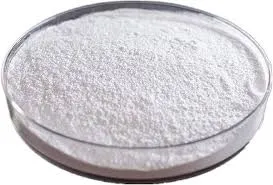
វិច្ឆិកា . 04, 2024 13:14 Back to list
Redispersible Polymer Powder for Enhanced Performance in Construction Applications
Understanding Redispersible Powder Polymers Properties, Applications, and Benefits
Redispersible powder polymers (RDPs) play an increasingly vital role in various industries, particularly in construction, adhesives, coatings, and paints. These polymers are finely powdered forms of water-soluble polymers that can be redispersed in water to form a stable dispersion. This unique property facilitates their use in a range of applications, enhancing product performance and versatility.
What Are Redispersible Powder Polymers?
RDPs are derivatives of synthetic resins and are primarily used as additives in dry-mix formulations. They are produced through a process called spray-drying, where a water-based polymer emulsion is dried, resulting in a free-flowing powder. When mixed with water, RDPs rehydrate and form a stable dispersion that can easily blend into various materials. Common types of RDPs include vinyl acetate-ethylene (VAE), styrene-acrylic, and polyvinyl acetate (PVAc).
Properties of Redispersible Powder Polymers
1. Adhesion and Cohesion One of the most significant advantages of RDPs is their ability to enhance the adhesive properties of building materials. They improve the bond strength of mortars, tile adhesives, and other applications, ensuring long-lasting durability.
2. Water Resistance RDPs contribute to water resistance in cement-based formulations. This property is essential for construction materials that need to withstand moisture exposure, contributing to the overall longevity of structures.
3. Flexibility and Workability When mixed with dry powders, RDPs improve flexibility and workability, allowing for easier application. These benefits are particularly useful in tile adhesive and plaster applications where ease of use is paramount.
4. Resistance to Cracking RDPs help in minimizing cracking due to their film-forming properties. In combination with other materials, they provide a robust matrix that distributes stress efficiently.
5. Compatibility RDPs can be blended with various powders, including cement, gypsum, and other additives, allowing for versatile formulations tailored to specific applications.
Applications of Redispersible Powder Polymers
1. Construction Industry RDPs are predominantly used in cement-based products, such as tile adhesives, plaster, and self-leveling compounds. Their ability to enhance adhesion, flexibility, and water resistance makes them indispensable in modern construction techniques.
redispersible powder polymer

2. Adhesives In the adhesive market, RDPs are favored for their superior bonding properties. They are utilized in both interior and exterior adhesives, improving performance in challenging environments.
3. Coatings and Paints RDPs are crucial components in paints and coatings, providing improved adhesion to surfaces and enhancing water and weather resistance. This application is critical for the longevity and effectiveness of coatings intended for outdoor use.
4. Polymer Modified Mortars In various mortar products, RDPs enable modification that enhances performance characteristics, such as improved adhesion, flexibility, and reduced water permeability.
Benefits of Using Redispersible Powder Polymers
The inclusion of RDPs in formulations offers numerous benefits to manufacturers and end users alike
- Cost-Effectiveness By enhancing the properties of basic materials, RDPs can reduce the amount of other expensive additives needed, leading to cost savings in production.
- Enhanced Performance Products incorporating RDPs often exhibit improved performance characteristics, leading to better user experiences and longer product life.
- Environmental Benefits Many RDPs are formulated to be low in volatile organic compounds (VOCs), contributing to more environmentally friendly products.
- Tailored Solutions The versatility of RDPs allows manufacturers to develop customized formulations for specific applications, meeting diverse customer needs.
Conclusion
Redispersible powder polymers represent a remarkable advancement in materials science, offering a wide range of benefits across various industries. From enhancing adhesive strengths in construction materials to improving the performance of paints and coatings, RDPs are essential for many modern formulations. As industries continue to innovate, the role of RDPs will only grow, leading to stronger, more efficient, and environmentally friendly products. Embracing this technology benefits manufacturers and ultimately leads to better quality products for consumers.
-
The Widespread Application of Redispersible Powder in Construction and Building Materials
NewsMay.16,2025
-
The Widespread Application of Hpmc in the Detergent Industry
NewsMay.16,2025
-
The Main Applications of Hydroxyethyl Cellulose in Paints and Coatings
NewsMay.16,2025
-
Mortar Bonding Agent: the Key to Enhancing the Adhesion Between New and Old Mortar Layers and Between Mortar and Different Substrates
NewsMay.16,2025
-
HPMC: Application as a thickener and excipient
NewsMay.16,2025
-
Hec Cellulose Cellulose: Multi functional dispersants and high-efficiency thickeners
NewsMay.16,2025







